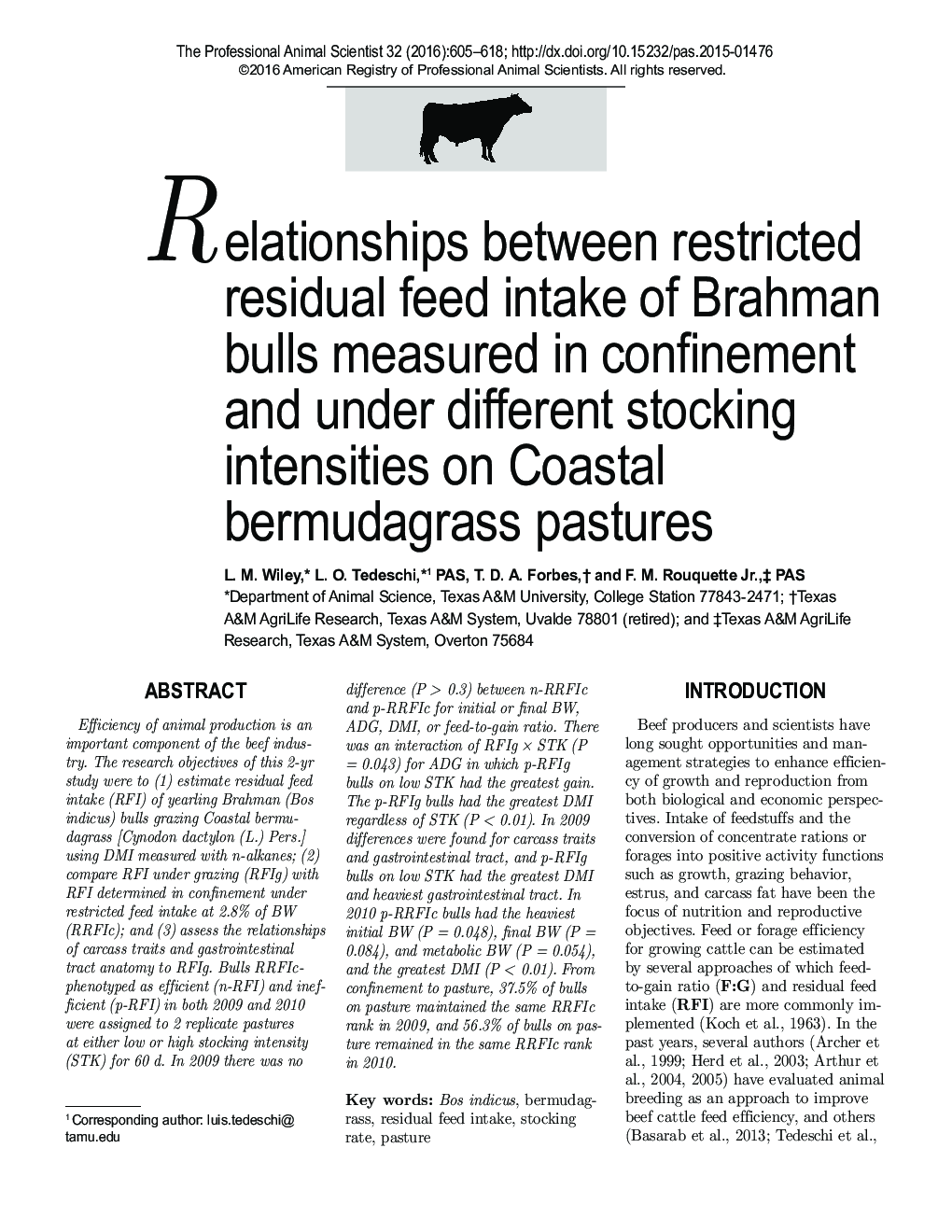| Article ID | Journal | Published Year | Pages | File Type |
|---|---|---|---|---|
| 8503829 | The Professional Animal Scientist | 2016 | 14 Pages |
Abstract
Efficiency of animal production is an important component of the beef industry. The research objectives of this 2-yr study were to (1) estimate residual feed intake (RFI) of yearling Brahman (Bos indicus) bulls grazing Coastal bermudagrass [Cynodon dactylon (L.) Pers.] using DMI measured with n-alkanes; (2) compare RFI under grazing (RFIg) with RFI determined in confinement under restricted feed intake at 2.8% of BW (RRFIc); and (3) assess the relationships of carcass traits and gastrointestinal tract anatomy to RFIg. Bulls RRFIc-phenotyped as efficient (n-RFI) and inefficient (p-RFI) in both 2009 and 2010 were assigned to 2 replicate pastures at either low or high stocking intensity (STK) for 60 d. In 2009 there was no difference (P > 0.3) between n-RRFIc and p-RRFIc for initial or final BW, ADG, DMI, or feed-to-gain ratio. There was an interaction of RFIg à STK (P = 0.043) for ADG in which p-RFIg bulls on low STK had the greatest gain. The p-RFIg bulls had the greatest DMI regardless of STK (P < 0.01). In 2009 differences were found for carcass traits and gastrointestinal tract, and p-RFIg bulls on low STK had the greatest DMI and heaviest gastrointestinal tract. In 2010 p-RRFIc bulls had the heaviest initial BW (P = 0.048), final BW (P = 0.084), and metabolic BW (P = 0.054), and the greatest DMI (P < 0.01). From confinement to pasture, 37.5% of bulls on pasture maintained the same RRFIc rank in 2009, and 56.3% of bulls on pasture remained in the same RRFIc rank in 2010.
Related Topics
Life Sciences
Agricultural and Biological Sciences
Animal Science and Zoology
Authors
L.M. Wiley, L.O. PAS, T.D.A. Forbes, F.M. PAS,
